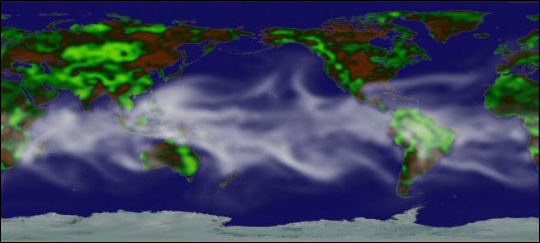


Weather prediction is hard enough. But what are the possibilities for predicting events related to weather?
With new tools being developed at NASA’s Goddard Space Flight Center in Greenbelt, Md., and NASA’s ever increasing suite of Earth observations, scientists just might be on the road to estimating future weather-related incidents.
A recent real world example suggests just how valuable this kind of information could be. Following the devastating season of wildfires in the western United States, many questions remain. Could officials have predicted the conditions for the severity of last summer’s fire season, and therefore planned differently?
At Goddard, experts are developing a system that someday soon might be useful in making those predictions. Oceanographer Dr. David Adamec and a team of earth scientists and others are using satellite measurements and conventional temperature readings of the oceans to drive an advanced computer simulation depicting seasonal to annual changes in the land and atmosphere.
The goal of the research is to use the model to forecast real world, short-term climate trends. “We’ve essentially constructed a climate in cyberspace,” said Adamec. “With the kind of dedicated digital horsepower at our disposal, this model goes far beyond anything available to the desktop world.”
Adamec says the simulation churns its digital winds and pelts the electronic ground with simulated rain inside the heart of a Cray T3E supercomputer. Although some years old now, NASA’s T3E is still one of the fastest systems in the world.
The above image shows the results of one such simulation. Brown and green colors represent soils that are drier (brown) or wetter (green) than normal. Water vapor is shown by increasing whiteness.
For more information, see the press release.
Image courtesy NASA GSFC Scientific Visualization Studio